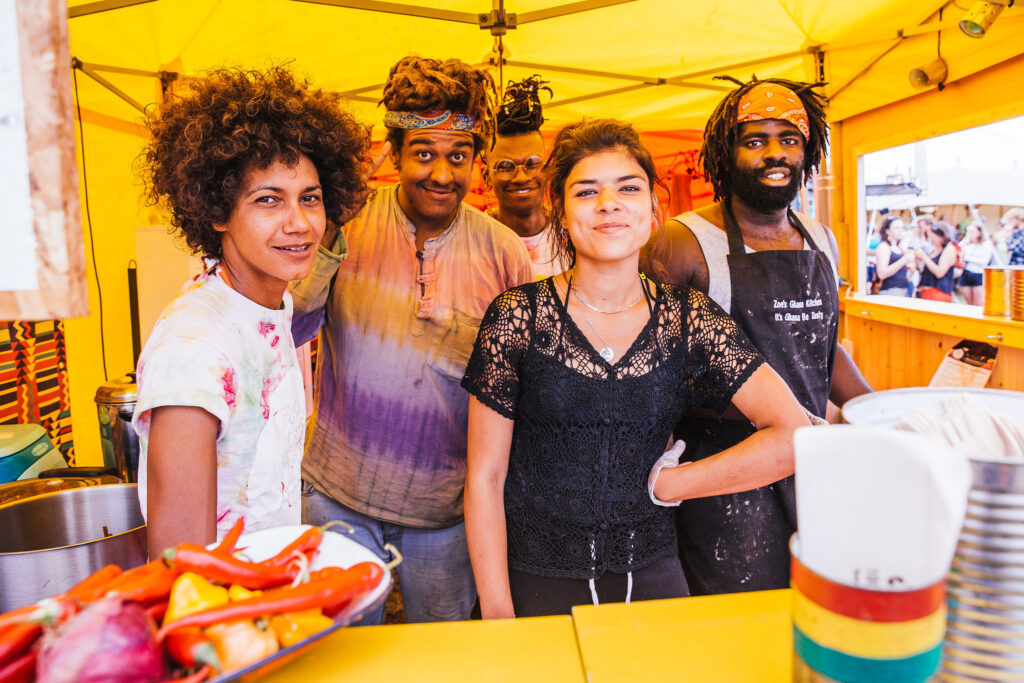The Brief
Food systems account for approximately a third of human generated greenhouse gases.1
We’ve been proudly and pioneeringly meat and fish free at our flagship festival (Shambala) since 2016, and removed dairy milk from our beverages back in 2019, but we wanted to get even more detailed data on our food footprint to reduce the impact further, wherever we possibly could!
We wanted to:
- Figure out the exact CO2 equivalent in tons, of our festival food.
- Compare each dish with the WWF One Planet Plate directive of 0.5kg CO2e. 2
- To communicate the changes needed, concisely and effectively, to our food traders.
- To nudge our audience, caterers and crew on choosing the meals with the most ethical, low-impact ingredients
The Process
- We partnered with Klimato, a software solution that calculates the carbon footprint of ingredients and meals.
- We worked with our food traders and our crew canteen, to help them add each menu item they were offering, to the Klimato software. 74% of our traders got involved – a very decent sample size!
- Finally, we asked them for their sales data after the 4 day festival – 67% provided details on the amount of dishes they sold.
The Result
- Klimato provided detailed reports on the impact of each dish served, based on their ingredients.
- We were able to measure the overall impact of all dishes made and sold on site.
- We were then able to deduce the average impact of a dish on site: 0.43 kg CO2e.
- However, actual sales showed that the average was 0.55 kg CO2e – as our audience leant into the more naughty, high-impact food choices including more ingredients like cheese, rice and soy.
- Overall, our food footprint across the 4 day festival equated to 54.10 tonnes CO2e – or 6% of our overall carbon foodprint.
Next on the menu is minimising our use of the high-impact ingredients. We’re cooking up ideas to trial in our Crew Canteen, like replacing rice with ancient, locally-UK-grown emmer grains… watch this space!



